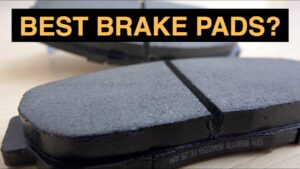Do you know how to reset idle after replacing battery in vehicles? We expect most of them do not know the answer and thus, search for the same. It’s a procedure that is often experienced after every time you replace or change the battery.  In this article, we will cover specific essential points related to the resetting of idle vehicle procedure, rough idle, and a few other commonly asked questions concerning the content. So, let’s begin with the discussion over the topic.
In this article, we will cover specific essential points related to the resetting of idle vehicle procedure, rough idle, and a few other commonly asked questions concerning the content. So, let’s begin with the discussion over the topic.
Table of Contents
What Is Idling In Vehicles?
 Idling in vehicles refers to running an engine when the car is not in motion. It commonly experiences when drivers are stopped at a red light waiting or while parked outside the residence. It believes that idling of car produces or release as much pollution as a moving car.
Idling in vehicles refers to running an engine when the car is not in motion. It commonly experiences when drivers are stopped at a red light waiting or while parked outside the residence. It believes that idling of car produces or release as much pollution as a moving car.
How To Reset Idle After Replacing Battery?
Many cars with powertrain control modules (PCM) have to reset engine idle after a battery is disconnected. In this, removing power from the engine would result in erasing idle memory from the PCM, i.e., the computer where it is stored. Therefore, the relearning process depends on the powertrain control modules (PCM).
Here, you need to follow specific steps to reset idle as previously. Thus, follow all the points sequentially, and you’ll reach your desired result. So, let’s begin with a brief discussion over the steps.
Step 1:
 The first step deals with switching off all the lights, stereo, or any other system in the car. It would prevent the engine from drawing extra current from these devices. After this, immediately disconnect the battery for at least thirty minutes and then reconnect it again.
The first step deals with switching off all the lights, stereo, or any other system in the car. It would prevent the engine from drawing extra current from these devices. After this, immediately disconnect the battery for at least thirty minutes and then reconnect it again.
Step 2:
 After following the above instructions, the main work starts from here, i.e., soon after the reconnection of the battery to the car. So, before you start the car for the first time after reconnection, turn the key to the ON position. But remember not to turn the engine over.
After following the above instructions, the main work starts from here, i.e., soon after the reconnection of the battery to the car. So, before you start the car for the first time after reconnection, turn the key to the ON position. But remember not to turn the engine over.
Then wait for at least ten to fifteen minutes so that the electronic throttle body (ETB) or IACV has sufficient time to go to the factory programmed home position. It is the crucial function of the step which needs to perform carefully and properly to prevent any malfunctioning generated due to minor damages.
Step 3:
 After waiting for few minutes, move on to the next step. Here, in this step, start your car and let it remain idle without any load of different devices like lights, air conditioner, or any other system.
After waiting for few minutes, move on to the next step. Here, in this step, start your car and let it remain idle without any load of different devices like lights, air conditioner, or any other system.
You may notice certain disturbances every twenty to thirty seconds, but don’t worry, they are normal. It happens so the idle will adjust up and down as the electrical control unit (ECU) tries to change it towards a stoichiometric fuel to air mixture.
Step 4:
 Soon after following the above step, we recommend you leave the engine running for around ten to fifteen minutes. But within this time, do not touch or apply the accelerator. And also, do not turn on anything that will cause an extra electric current flow in the system. It would increase the load on the engine and hence ruin all your effort from the beginning.
Soon after following the above step, we recommend you leave the engine running for around ten to fifteen minutes. But within this time, do not touch or apply the accelerator. And also, do not turn on anything that will cause an extra electric current flow in the system. It would increase the load on the engine and hence ruin all your effort from the beginning.
However, we recommend you perform the procedure in an open area as it would help to cope with the issues whenever faces any fault. Next, turn off the engine after completing the given time and leave the key in the OFF position for at least twenty seconds.
Step 5:
 As in the Step 2, turns the key back to the ON position again for about ten to fifteen seconds. And it must perform without actually starting the engine in the car. Now, initiate or switch on the engine and leave it idle for a further five minutes without touching the accelerator and without turning on the other systems in the vehicle.
As in the Step 2, turns the key back to the ON position again for about ten to fifteen seconds. And it must perform without actually starting the engine in the car. Now, initiate or switch on the engine and leave it idle for a further five minutes without touching the accelerator and without turning on the other systems in the vehicle.
At last, turn on the engine again and wait for at least twenty seconds before restarting. Next, take your car for a test drive as the ECU now be fully retained. Hence, your work is complete here, and your vehicle is back to a smooth and comfortable journey.
Why Is My Car Idling Low After Battery Change?
Whenever you go to battery change or replacement, your car’s computer software disconnects from the power. As an outcome, there is a probability that you may reset your car’s memory to the original default settings. It could also include the engine’s idle settings, which would cause your vehicle to stall.
Stalling is generally the sudden stop or cessation in the vehicle due to improper and insufficient power received by the engine. It occurs accidentally and often occurs after reinstalling a new battery.
What Make A Rough Idle?
 There are a wide variety of causes responsible for the generation of rough idle in the vehicles. The most common causes include dirty fuel injectors, clogged air filters, bad spark plugs, and multiple exhaust system issues.
There are a wide variety of causes responsible for the generation of rough idle in the vehicles. The most common causes include dirty fuel injectors, clogged air filters, bad spark plugs, and multiple exhaust system issues.
Some of these causes are simple to fix while are pretty complicated concerning fixation procedure and costs. However, an accurate diagnosis can help you in dealing with the situation effectively.
Is It Normal For RPM To Fluctuate At Idle?
It is entirely normal to face fluctuation or disturbances for the engine idle speed in a small amount. These are the days of a mechanically adjustable idle speed screw and a mechanical cable operated throttle. However, RPM here stands for rotation per minute in the vehicle’s tires.
So, don’t panic or overthink about such fluctuations and deal calmy to handle the issues related to the idle procedure in the car.
Conclusion
We hope the information mentioned above help and guide you in dealing with the situation smoothly and correctly. However, we also expect that by the end of the topic, you know how to reset idle after replacing battery in the vehicle.
If your doubts or queries regarding the content persist, we request you to comment below in the comment box. And we’ll make all efforts to answer all your questions correctly as quickly as possible.


